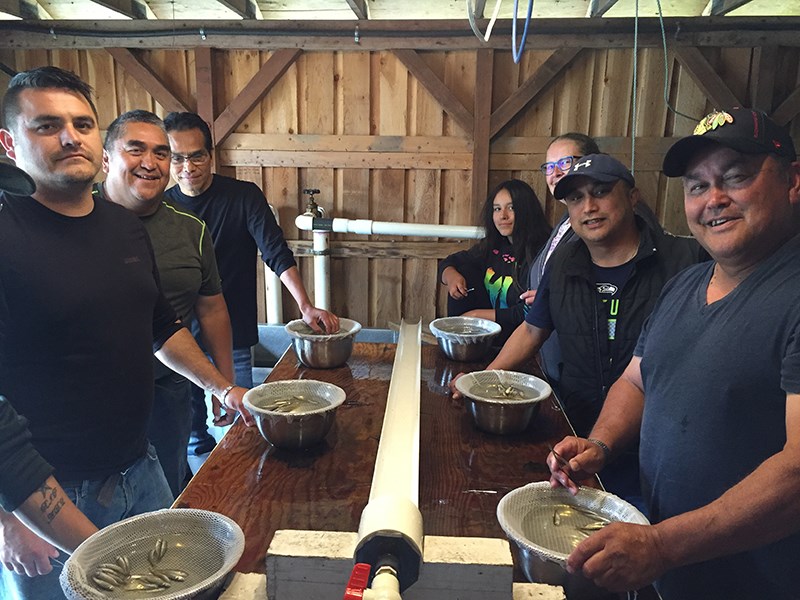Each year, workers at Tla’amin Salmon Hatchery gather to clip fish before setting them free in Sliammon Lake. Up to 60,000 coho were recently marked this way to let sport fishers know which ones they are entitled to catch.
“We remove the adipose fin from the coho we raise here,” said hatchery manager Lee George. “It’s a visual mark so when people fish they know they’re only allowed to keep marked coho, up to two a day. The ones with the adipose fin still attached you have to let them go for conservation measures.”
Marking the fish also functions as an assessment tool, according to Fisheries and Oceans Canada community adviser Laura Terry.
“The fish coming back unclipped are wild, so they can compare hatchery to wild,” said Terry.
The fish are reared and incubated at the hatchery. After being clipped they are transported to Sliammon Lake where they eventually migrate to the ocean.
“We’re anticipating that 70 to 75 per cent of those coho that returned last year into the river were clipped,” said George. “That tells you its working and people got a share of it.”
The hatchery, which has been operating for more than 40 years at Tla’amin, is one of the longest running of its kind, according to Terry. Along with rearing and raising 60,000 coho, one million pink, three million chum and 120,000 chinook salmon, it works on habitat rehabilitation.
Last year hatchery workers removed more than two kilometers of wooded debris from local streams that were blocking the way to the salmon spawning grounds. A smokehouse on site is used by the local community for preserving food fish, and ongoing education of local schoolchildren is also a big part of the work.
“School District 47 kids come through here and get hands-on understanding of the birds and bees of the life cycle of salmon,” said George. “We get up to 600 kids annually coming through here. That’s been going for more than 20 years now.”
Salmon stewardship is really important, not only the hatchery but the people of Tla’amin Nation, said Terry.
“They really strongly believe in conservation. The fishing ban that’s on right now for chinook, they are adhering to and want others to adhere,” she added.
Terry said work being achieved by the hatchery makes a big impact in the region.
“This is a big component for fishing in Powell River. It’s a big deal that they clip 60,000 coho and release them every year,” she added. “A lot of people don’t realize that the cohos they’re catching out here are actually coming from Sliammon. They’re the only ones here that clip their coho.”
For George, who has worked at the hatchery for more than 30 years, there is a lot of pride in the work they’ve achieved so far. “There’s a lot involved in raising salmon, a lot of time, care, love and attention,” he said. “We’ve been doing this since 1977. Good luck to everyone fishing this year. Keep your lines tight and be conservative.”



